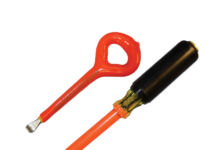When looking for growth, most leaders don’t want to leave any stone unturned. Where can we find new customers? Maybe this segment or that segment? Why not both? The problem is, that the broader the net, the more diluted the message. No matter how hard you try, you can’t be everything to everyone. If you try, you lose distinctiveness and differentiation—a key competitive advantage.
For example, take a simple product, such as a vacuum cleaner. Almost everyone needs a vacuum cleaner, barring people who are homeless or nomads. Therefore, why not reinforce the virtues of our product, its superior engineering, its reliability, suction power, maneuverability, etc.? Why not let everyone know about these differences? Spread the word as far as it can reach?
It seems logical, as there’s perceived safety in targeting everyone. Why would we want to isolate or not speak to a specific group of vacuum users? They all might want to buy a vacuum, and we want them to think of us! However, this isn’t different, and it’s definitely not distinct. These two things are what makes a company stand out, and an offering connects with people on a deeper level. Anyone can take a bunch of money and throw it into the void trying to get market attention and sales. But it takes talent to identify a distinct space to compete in and a unique way to do it.
 Think of it this way – just like a job applicant, you want to stand out from the other people competing for the position, emphasizing those skillsets that are uniquely valuable for that company and industry to give yourself a leg up. Sending the same generic, laundry-list resume to any and all companies gets you little to no call-backs unless you’re sending in thousands of applications – which is really just playing the odds.
Think of it this way – just like a job applicant, you want to stand out from the other people competing for the position, emphasizing those skillsets that are uniquely valuable for that company and industry to give yourself a leg up. Sending the same generic, laundry-list resume to any and all companies gets you little to no call-backs unless you’re sending in thousands of applications – which is really just playing the odds.
Going back to our vacuum example, Bissell focuses their advertisements on pet owners – specifically dog owners. They show their products to dogs, talk about their products’ performance in cleaning up pet hair, they donate to dog shelters. Their objective is to be the go-to vacuum for people who own pets. What if you don’t own a pet? Will Bissell not sell you a vacuum? Of course, they will. Do you feel their brand doesn’t speak to you if you’re not a pet owner? No. You may even be more apt to purchase a Bissell, as if it can tackle pet hair, it should be able to handle your pet-free home. Other vacuum companies can claim they “work great for pets” but Bissell is focused on this segment, and positioned to own it.
Another example of positioning is Yeti. There are tons of cooler and thermos brands out there. Everyone says they keep your drinks and food cold. Some perform better than others. But Yeti decided to target professional outdoorsmen – people who were most comfortable outside on a frozen pond or hunting in the woods. This audience has different needs, standards, and demands for products than your average beachgoer. Yeti wanted to focus here – where they could target discerning buyers with high-end products. Their advertisements and messaging reflect this, showing the product in rough-and-tumble environments. By positioning their offerings to this target, they don’t isolate those who aren’t rugged outdoorsmen, but quite the opposite – average consumers perceive the products as superior, especially if professionals prefer them – and are willing to pay a premium to join that proverbial club.
Targeting and differentiation are about identifying whom you can cater to, and how to position your offerings uniquely to that market to create a distinct competitive advantage, rather than attempting to be everything to everyone. If you don’t take that leap, you’ll compete with all the other companies which try to reach everyone as well – and at that point, the only way to stand out is money. And it’ll take a lot of it.









































